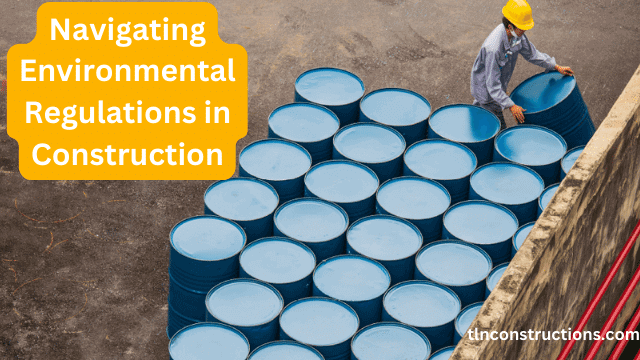As the global population grows, so does the demand for new infrastructure and buildings. However, construction activities have a significant impact on the environment. Environmental regulations have been put in place to minimize the environmental impact of construction activities. This article explores the various environmental regulations that apply to construction activities and the steps that construction companies can take to comply with these regulations.
Introduction
- Definition of environmental regulations in construction
- Importance of environmental regulations in construction
- Brief overview of the article
Environmental Regulations in Construction
- Federal environmental regulations in the United States
- State environmental regulations in the United States
- International environmental regulations
- The role of regulatory agencies
Key Environmental Regulations
- National Environmental Policy Act (NEPA)
- Clean Air Act (CAA)
- Clean Water Act (CWA)
- Resource Conservation and Recovery Act (RCRA)
- Comprehensive Environmental Response, Compensation and Liability Act (CERCLA)
Compliance with Environmental Regulations
- Compliance planning
- Site assessments and environmental audits
- Training and education
- Pollution prevention
- Waste management
Benefits of Environmental Compliance
- Reduced liability and risk
- Improved reputation
- Cost savings
- Enhanced relationships with stakeholders
Challenges of Environmental Compliance
- Complexity of regulations
- Varying regulatory requirements
- High compliance costs
- Limited resources and expertise
Conclusion
In conclusion, construction companies must comply with environmental regulations to minimize the environmental impact of their activities. Compliance planning, site assessments, and waste management are some of the steps that companies can take to comply with environmental regulations. While environmental compliance may present challenges, the benefits of compliance outweigh the costs.
FAQs
- What are environmental regulations in construction?
- Environmental regulations are rules and guidelines that aim to minimize the impact of construction activities on the environment.
- What are some of the key environmental regulations that apply to construction activities?
- Some of the key environmental regulations include the National Environmental Policy Act, Clean Air Act, Clean Water Act, Resource Conservation and Recovery Act, and Comprehensive Environmental Response, Compensation and Liability Act.
- Why is environmental compliance important for construction companies?
- Environmental compliance is important for construction companies because it minimizes the environmental impact of their activities, reduces liability and risk, and enhances their reputation.
- What are some of the challenges of environmental compliance in construction?
- Some of the challenges of environmental compliance in construction include the complexity of regulations, varying regulatory requirements, high compliance costs, and limited resources and expertise.
- How can construction companies ensure compliance with environmental regulations?
- Construction companies can ensure compliance with environmental regulations by developing compliance plans, conducting site assessments and environmental audits, providing training and education, implementing pollution prevention measures, and managing waste.
